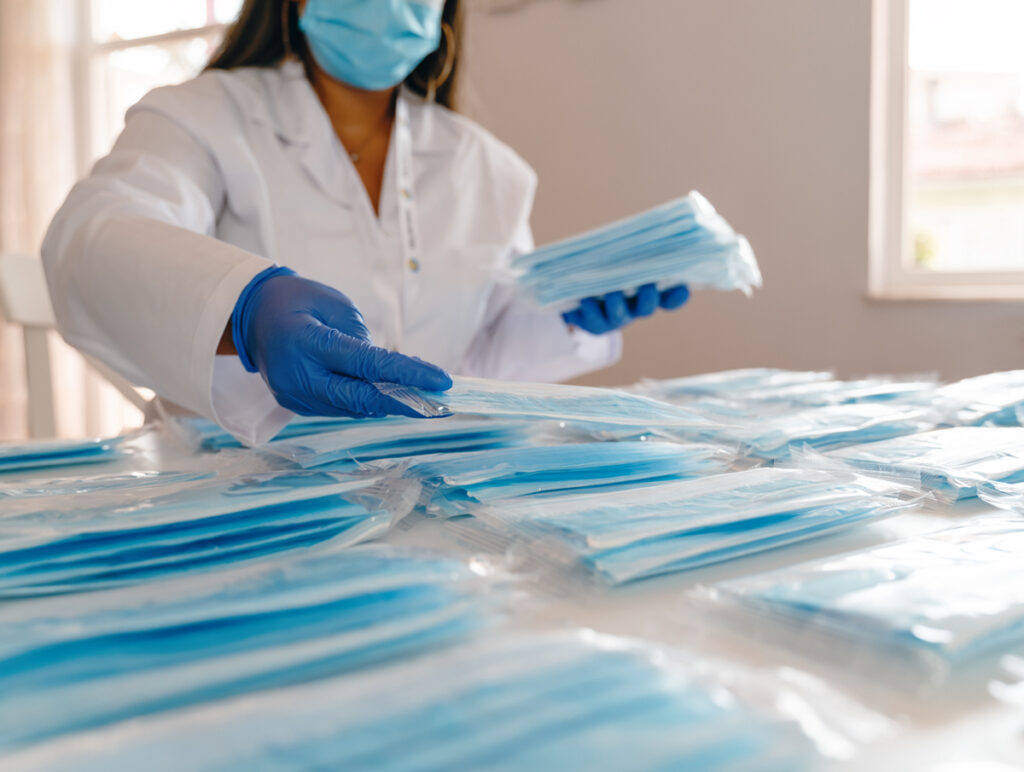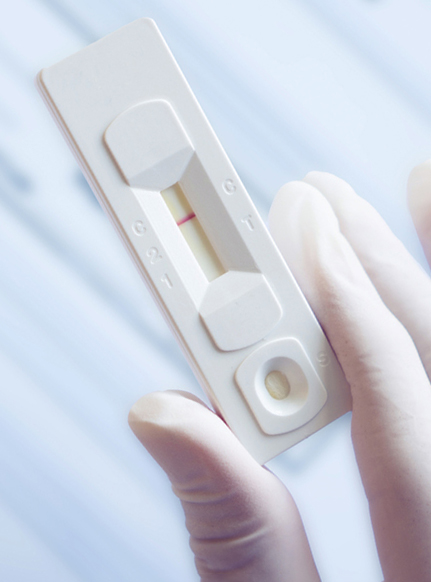Making sense of this year’s supply chain disruptions, fluctuations, and changes
As a distributor, Cardinal Health has been uniquely positioned to get a bird’s eye view of the extreme fluctuations in demand for various products used for COVID testing throughout the pandemic.
“It’s definitely been an interesting journey and a lot of it falls really right on…how our healthcare system was approaching the populations,” says Dan Romain, vice president global sourcing for Cardinal Health.
“Early on, there was a very singular focus on testing,” says Romain, but there were not yet any COVID-19 tests available.
“So you saw this huge rush – almost like a second flu season – as we were trying to provide some answers to patients.”
At the same time, there was an unprecedented spike in demand on collection products like swabs and viral transport media in order to be able to test as many patients as possible.

Massive increases in demand for lab and testing supplies occurred early on, Romain says. He noted that in March there was “something in the order of a seven-fold increase in demand for those items compared to what Cardinal was seeing pre-pandemic.”
Currently, he said the company was still seeing a many-fold increase for those products as compared to before the pandemic. He noted that the increased demand had been “sustained but that it was starting to settle down a little.”
As demand for various products surged beyond what was globally available and what could be produced, supply backlogs started. By July, Romain said that the backlogs for specimen collection supplies seemed to be diminishing, but were still 3 to 4 times that of anything pre-pandemic.
“It’s created a really interesting period of time in terms of managing that supply chain,” Romain says.
Talk about an understatement.
Rolling shortages
Because everything within the supply chain is so connected, any shortage will cause a ripple effect on other products and categories. No shortage is ever isolated, but such severe and wide-ranging shortages brought on by the pandemic have set off a cascade of rolling shortages across the market.
“From a diagnostic testing perspective … the collection products – products needed to obtain the samples – have seen extreme pressures, not just here but globally,” says Romain. “PPE is another area where [Cardinal Health] has seen extreme pressures on the system as folks need those products to keep individuals safe and to try to slow the spread of COVID.”
“Even within that, you can take it a level down,” says Romain. “As you get into the details there are those mini-shifts. PPE is a great example where it felt like even within that first it was masks, now it’s isolation gowns and exam gloves.”
He notes that the reasons for the shortages are twofold, with some of it being driven by the way the products were utilized globally and some of it being driven by shortages or backlogs in getting and processing raw materials.
The future
“It’s such a dynamic environment that’s constantly changing,” Romain says, noting the importance of focusing not only on overcoming any current problems but also by preparing for what the next issue will be.
“It’s trying to gather as much information as possible and starting to plan around that,” Romain says.
Romain says these are some of the key questions that need to be asked as we navigate through these uncertain times:
- How can we make sure that we’re set up for the best success?
- What can we do to make sure that we’ve got supply chain continuity?
- Do we have all the right relationships?
- Are we appropriately stockpiling the right amounts of products for that?
- How do we think differently about some of these categories where there were traditionally only very few suppliers, or on product categories that were not geographically diverse?
Drastic times
Drastic times call for drastic measures. The circumstances of this pandemic have demanded that supply chain find new and innovative methods in order to continue to support escalating and evolving needs within the healthcare system.
For Cardinal Health, this has meant expanding and reimagining its supplier relationships.
“We’re participating differently than we have in the past and partnering differently,” Romain says.
The company has been hard at work with its existing supplier partners in order to get a clearer and real-time understanding of their capacity and what each supplier is capable of producing.
Whether it’s helping with logistics or with sourcing items, the new objective is to make sure that Cardinal Health does what it can to ensure that its manufacturers are able to produce as much as possible and be as efficient as possible.
On top of that, Romain says the company is turning to companies that are “making collection materials that serve other markets or geographies” and then working to make those materials available within the U.S. market.
“We’ve all been working really hard to identify who those partners are out there and that we [Cardinal Health] can make sure that we add them to the supply chain,” Romain says.
In addition to looking to the international market for product sources, the company has turned to product sources beyond just those in the healthcare industry.
“Through the course of this journey, we’ve been able to work with some really great partners to bring totally new products to market,” says Romain. He cited one successful example of a partnership they formed with a company that was making a product for the dental market that was able to be modified and turned into a specimen collection swab.
“Now we’ve got this in our bag to say, ‘Hey, we can meet the increased demand as our available pool of suppliers just expanded’” says Romain. “Those are the kinds of things that we’re doing to make sure that we’re prepared and have access to more products moving forward.”
How lab testing has changed over the course of the pandemic
The pandemic has affected every aspect of the healthcare industry in unforeseeable ways. While the entire supply chain has been challenged, labs and testing were not only heavily impacted but were also placed in the national spotlight.
It will come as no surprise that Henry Ford Health System’s strategies for testing has evolved over the course of the year, according to John Waugh, system vice president pathology and laboratory medicine.
“Initially, as we were riding up the curve of this, the conventional thinking was that we needed to assume that almost all of the patients that we were seeing were positive and that we need to be extremely careful,” Waugh says. “Then, of course, our hospitals were just absolutely full and they switched over from being medical/surgical hospitals to really being a full hospital of ICU and medical beds.”
By mid-June, as the country seemed to be getting the infection under control, Waugh said that the thinking was starting to “shift back to the opposite of where we were before, and that we really should assume that the vast majority of people are negative.”
However, Waugh acknowledged that the health system was preparing to deal with a potential “second wave.”
“We’re in a little bit of a difficult period right now,” said Waugh, “because we see some states lighting back up again and that will bring the prevalence higher in the U.S. population.”
Respiratory season looms large
The United States will still be wrestling with the pandemic as we start into the “regular” respiratory season this year. Charting a path through is top of mind for labs everywhere, and Henry Ford Health is no exception.
Waugh says that Henry Ford Health will continue to watch the supplier market very closely in the months to come.
“Obviously, there’s a good likelihood that we could have a second surge that comes towards us and typically seasonal influenza hits at about December 1,” says Waugh.
Historically, influenza testing is done via point-of-care testing where acute patients present for care so that it’s typically tested in-office so providers can make informed treatment decisions during the visit.

“I think the dilemma coming at us is going to be likely worldwide allocation of products that have got multiple capabilities,” Waugh says.
“In this case, if we see influenza season overlapping with another resurgence of coronavirus here we’ll be right back where we were in March, where we were testing influenza A/B to rule out flu and then going after COVID-19 as a second option if patients were symptomatic but not presenting with a positive flu test results.” Additionally, he says they will be taking a harder look at a “number of suppliers that are working on multi-target molecular diagnostics, in particular, those able to pick up the SARS-COV-2 target as well as Influenza A/B and even RSV… Those are attractive products that will be, again, in worldwide demand an
